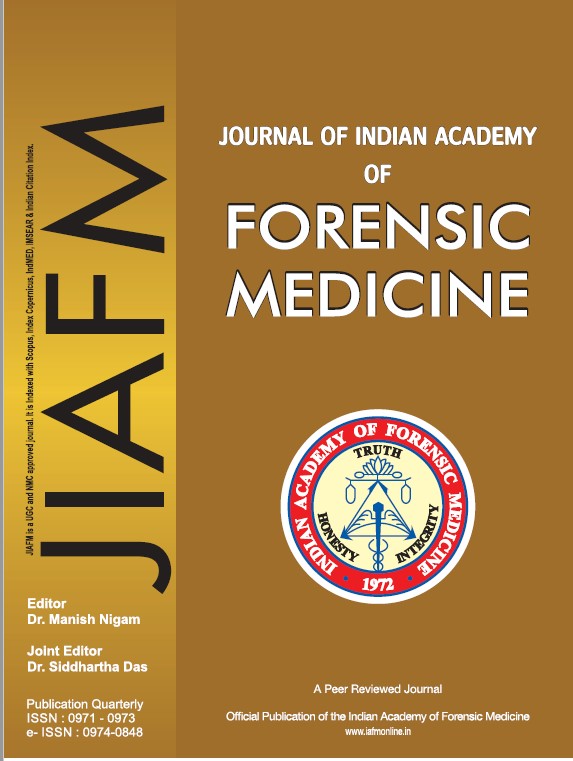A Histopathological Study of Vital Organs in Deaths due to Burns.
DOI:
https://doi.org/10.48165/Keywords:
Burn Deaths, Percentage of Burns, Survival Period, Histopathological StudyAbstract
Burn causes the injuries over the body. It is due to application of heat or chemical substances to the external or internal surfaces of the body. It causes destruction of the tissues, which produces histopathological changes in the tissues. It is very important to know the profile of histopathological changes in organs, commonest organ involved, correlation of duration of burns to decide the further mode of treatment. In the wake of this, it was decided to conduct prospective study of histopathological changes in the vital organs of death due to burns at Vilasrao Deshmukh government medical college, Latur, Maharashtra. Total 100 cases were selected for the histopathological study of vital organs i.e. lungs, liver, kidneys, brain and heart. Bronchopneumonia, intra-alveolar haemorrhages, inter - alveolar haemorrhages and interstitial pneumonitis were seen in lungs among cases died with in 24 hours but it was more pronounced after 3 to 7 days of survival period. Focal haemorrhage, infarction, periportal necros is were seen in liver among cases where percentage of burns is >40 % TBSA. The necrosis and changes in sinusoids which were seen decreased as the survival period increases in liver. Cloudy degeneration, tubular casts in renal tubules of kidneys were common findings in cases with any duration of survival. Tubular necrosis was most common finding in cases with <40% of burns followed by acute pyelonephritis, it is and were more pronounce das the percentage TBSA increases. Tubular casts and cloudy degeneration were seen in kidneys, nearly at any percentage of burn. The most common findings in brain were generalized oedema in 26% cases, followed by vacuolic degeneration in 20% cases. These changes were less marked before 24 hours of survival period and found more pronounced with increase in survival period. Changes in brain were seen less marked below 60%TBSA and found more as the percentage TBSA involved increases. Most common histopathological finding in cardiact issue were interstitial oedema, focal pallor at all stages of survival period. Other changes were less marked before 3-7 days of survival period, changes were found more pronounced with increase in survival period. More pronounced changes in heart observed as there was increase in percentage of burn, particularly at TSBA81-100%.


